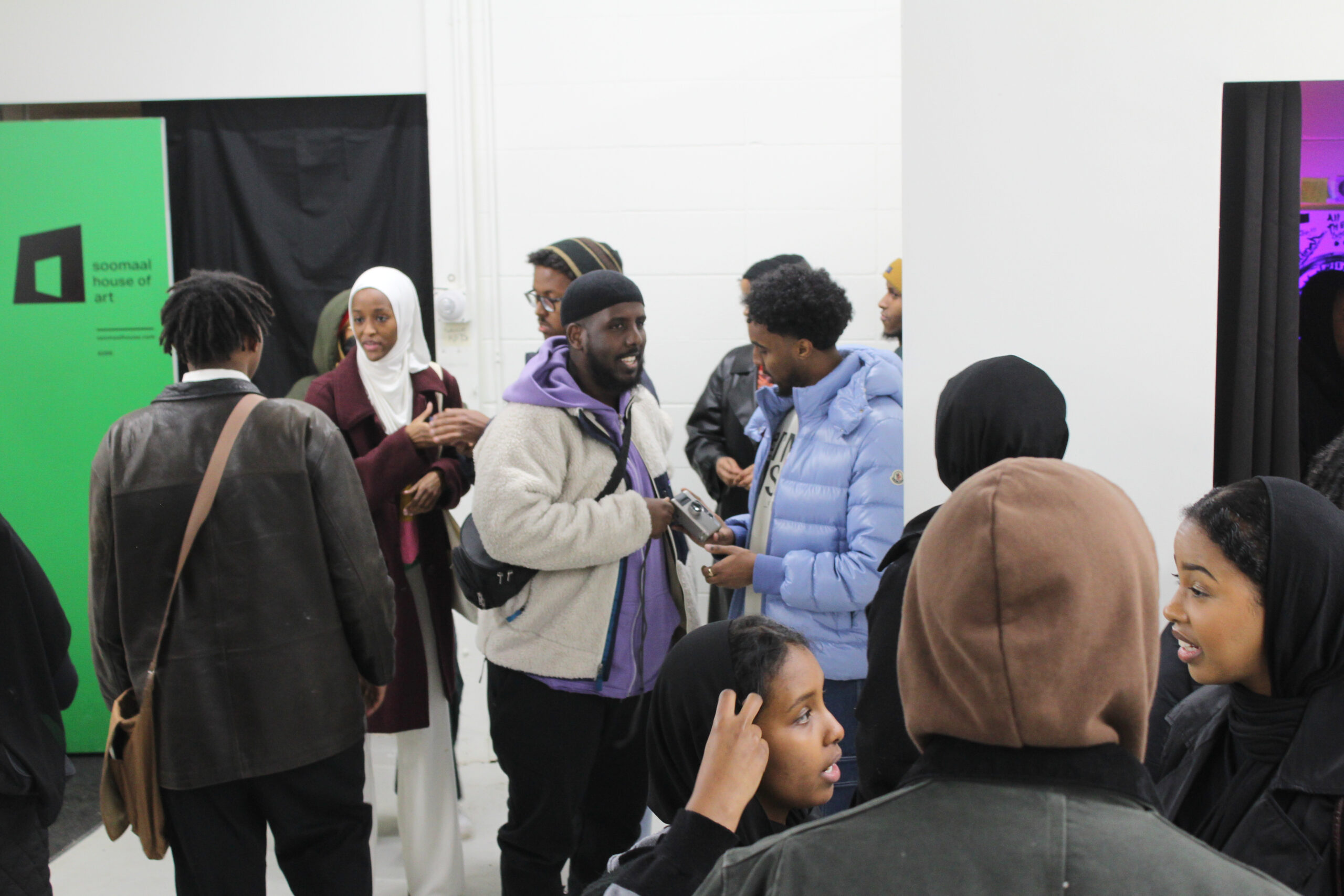
They didn’t take the conventional route of opening a gallery and waiting for visitors to drop in. They made the decision to bring art to their communities.
Kaamil Haider and Khadija Muse, along with Mohamud Mumin, founded Soomaal House of Art in 2014 in Minneapolis, Minnesota. Haider’s background is in graphic design, but his work now focuses on archival work and Muse is a visual artist with a background in installation-based work. In Milwaukee, Wisconsin, graphic designer-artists Amal Azzam and Nayfa Naji founded Fanana Banana in 2018 and held their first event in April 2019.
Both organizations focus on uplifting artists who share their cultural backgrounds. Soomaal House is an artist collective that focuses on platforming Somali visual artists in Minnesota and Fanana Banana has spotlighted the works of Muslim and MENA (Middle East and Northern Africa) artists in the Milwaukee area. Their name is derived from the Arabic word for artist, “fanaan,” and banana was added on to “make it catchy,” according to Azzam.
“We realized that we were dealing with similar struggles of just lack of representation,” Azzam said recalling a conversation with Naji. “We didn’t know other artists in our own community and then thinking of that on a larger scale, we realized we needed to do something about this because people aren’t going to do that for you.”
Art shows in unconventional spaces
Muse recalled the early years of Soomaal House’s programming where the collective relied on community connections and support. They curated the work of local and global artists in yoga studios, mosques, and community rooms located in apartment buildings.
“We kind of started with this attitude that we were going to do it. So, we are not waiting for a ton of money or a big art institution to provide that space,” Muse said. “Fortunately, even though it seems like we’re a small organization, which we are, but we have a lot of support.”
The initial years for Fanana Banana were very similar—receiving support from friends and community members to host their shows. “Our first show was literally in the back room of a Hookah Lounge,” Azzam said of the show that included over a dozen local Muslim artists. “The guy already had artwork all over his walls, but he had this back room that he was renting out to local organizers and artists.”
Although they had no plans to host another event, Azzam and Naji were approached by attendees of their first show asking about the next one. With this excitement and momentum, the two made a list of all the known artists in their community in hopes of including them in their next event. “We just literally sat like two Arab moms figuring out people’s names and where they’re from and what their IG [Instagram] handles are,” Azzam said.
Soomaal House held its first event at a mosque in St. Paul called Dar Uloom. The mosque owned the school building next door with space for artists to show their works in multiple rooms and speak with visitors. For Haider, this was the collective’s way of bringing the art to the community where they were.
AMAL AZZAM, CO-FOUNDER OF FANANA BANANA“We realized that we were dealing with similar struggles of just lack of representation.”
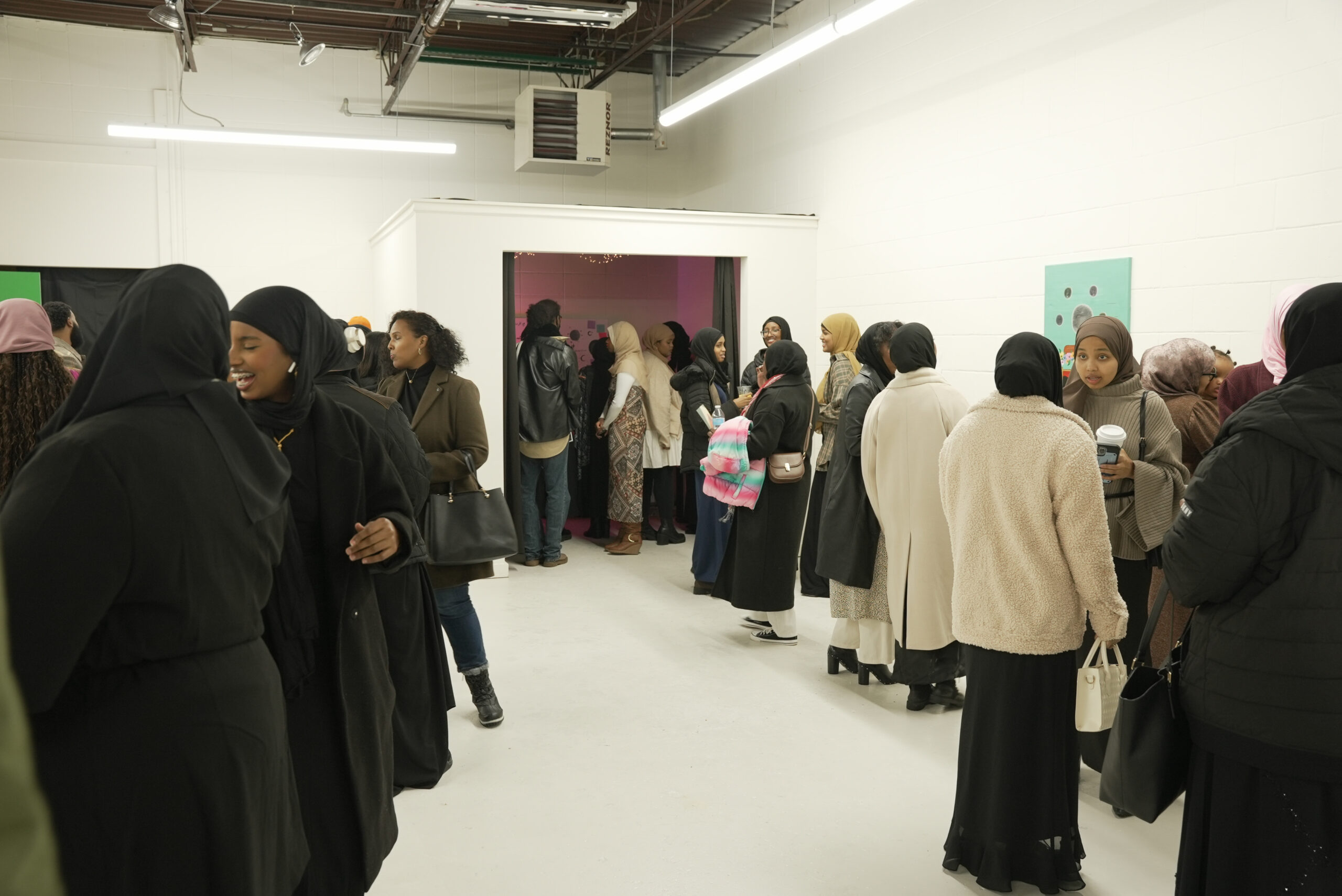
Conversations and Reflections
Both Soomaal House and Fanana Banana utilized the lived realities of their communities to inform the curation of art and conversations in their galleries.
Haider believes that through art Somalis can document their lived experience in Minnesota and reflect on their lives as a diaspora. “Coming here to Minnesota in the early 2000s there wasn’t a whole lot of visual culture,” he said. “The majority of the art forms that we were really used by the community were oral poetry, which allowed for our community to exist for centuries.”
Being in Milwaukee, Azzam and Naji saw Fanana Banana as a platform to organize around events in their city and offer artists opportunities to reflect on recent experiences related to the pandemic and instances of police brutality.
“During Covid, with the rise of the Black Lives Matter movement, we hosted a public mural in the making. So, we had some artists and there was a lot of research and pre-sketch going on to what the initial design would be,” Naji said. “It was a free and open space in the specific community that we did it in—to spark conversations, to heal, and to gather and unite as a community.”
Exhibits curated by Soomaal House are rooted in the Somali identity—with artists often exploring topics such as adulthood, motherhood, and Somali history.
Haider’s last exhibit ‘Kaana Xusuuso, Kanna Xus (Remember That One, and Commemorate This One): Orality, Visuality and the Colonial Archive of Somalia’ grappled with the reality of colonialism in Somalia through the poetry and songs of the last two centuries that opposed the colonial rule.
“With Kaamil’s exhibit, he was trying to find the visuals of that colonial time from a Somali lens and it’s something that’s missing,” Muse said. “So then, when we come across images and visuals taken by the colonizers, how do we interact with that and what does that tell us?”
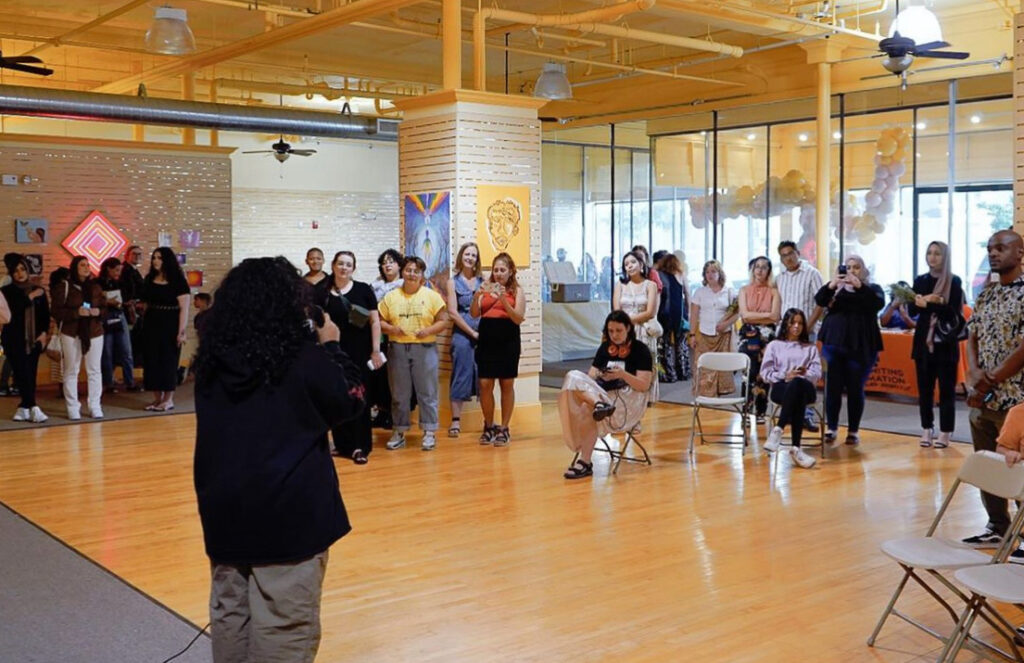
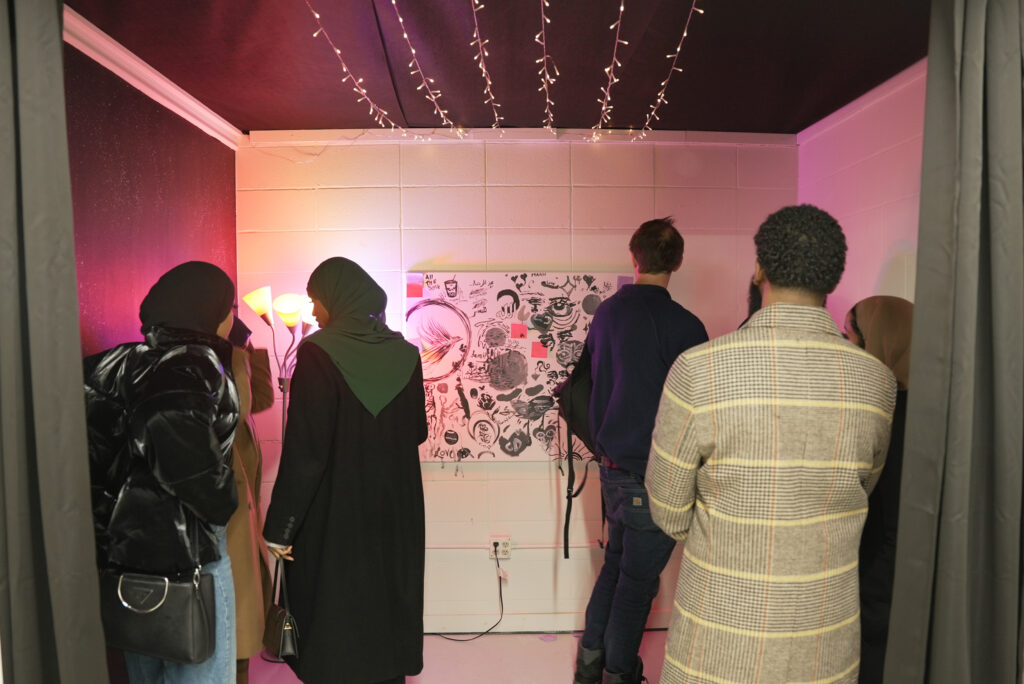
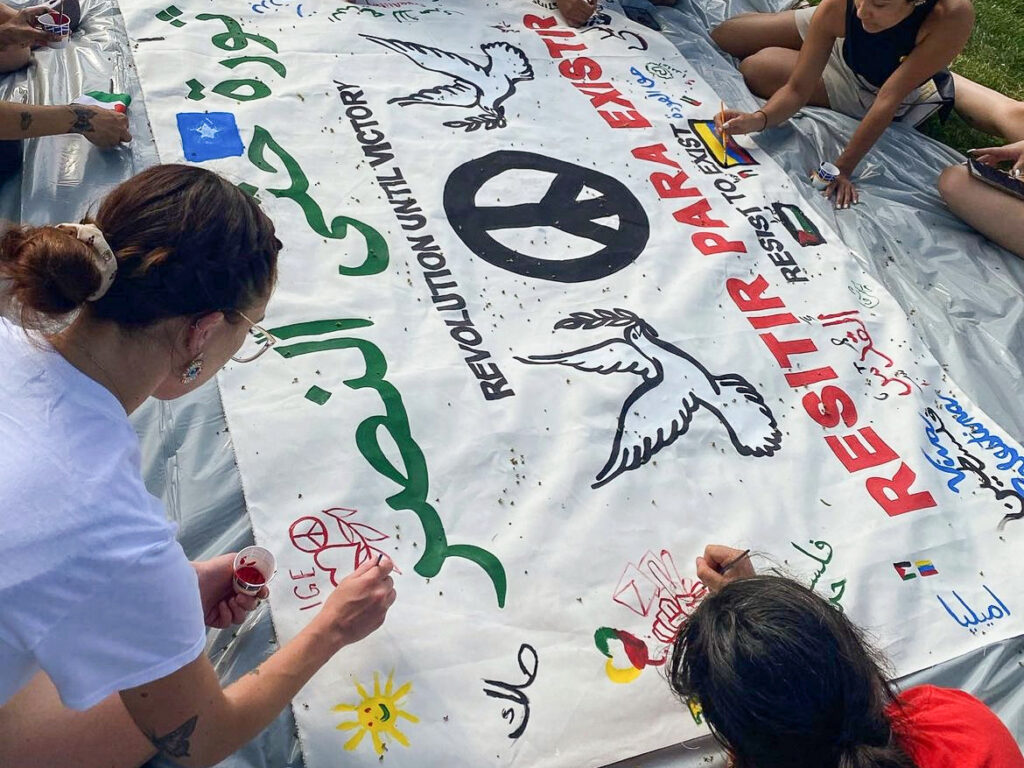
The exhibit created an opportunity for a younger generation to understand Somalia’s nuanced history and witness images of British colonial officers and Catholic priests occupying Somalia, a homogeneous country known for its Islamic roots.
“I think a lot of time when we tell Somali history we kind of go through that process really fast—like it was short-term then we won independence, and that’s how we tell it,” she said.
For many Muslims in the United States, the events of 9/11 have reverberated through their lives and have shaped their identity through media depictions of Muslims and the unfortunate marginalization and surveillance of Muslim and Arab youth. Azzam and Naji saw this reality as something worth tackling through art to give Muslim artists a platform to explore their Muslim American identities.
“We recently had a three-month-long exhibition at a gallery space called, ‘Reflecting My Muslim Americanism,’” Azzam said. “That was basically Muslim artists showcasing their artworks in the sense of hitting their identity, whether it’s being American, being Muslim, or whatever their ethnic background is.”
The exhibit also gave an opportunity for non-Muslims to understand the experiences of Muslims in the aftermath of 9/11 with some individuals approaching the organizers and expressing their gratitude for having the opportunity to do so.
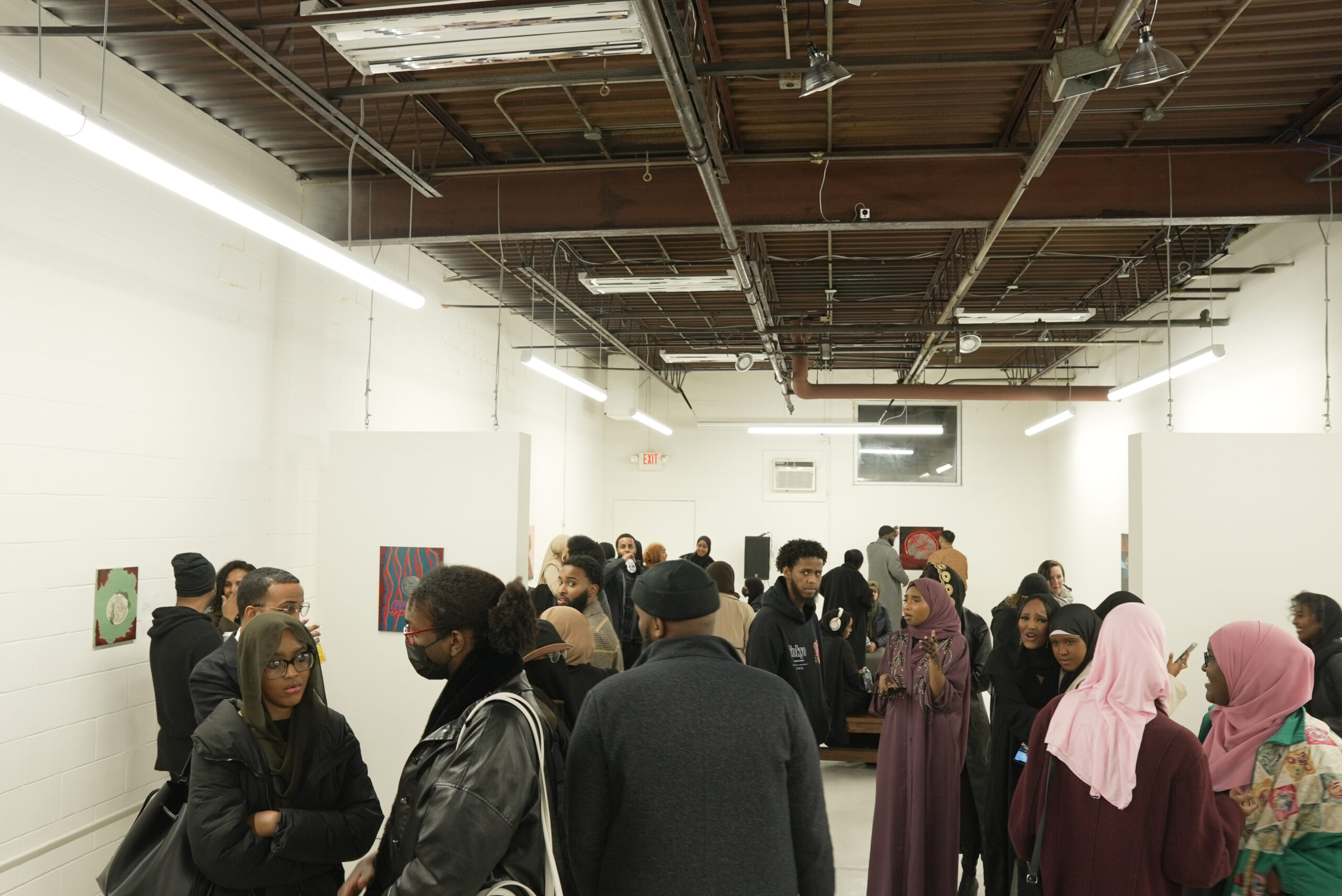
Space for belonging
Throughout the years the number of artists and visitors to Soomaal House has grown. Many have come to see the place as more than just a house of art, but a place where they belong. “I’m going to borrow words from some of the artists from this weekend— ‘it’s [Soomaal] like a second home,’” Muse said.
The organizers of Soomaal have expanded their programming to include community events that explore the same conversations around identity and life in the diaspora; from film screenings, to live podcast sessions, to a book launch, with several more planned for this year.
According to Naji, Fanana has caused a small yet strong ripple effect within the Milwaukee Muslim community. Ever since they started, people have turned to them with programming ideas to help different causes in the community. They recently held an art workshop for refugee children from Afghanistan to participate in art therapy.
“It’s nice to now be part of the conversation and part of that narrative where people know that we exist and now we’re on, like that list of organizers or groups that they can either collaborate with, work with, pay us for services,” she said.
Their recent exhibit exploring Muslim identity in America was held at the Milwaukee Artist Resource Network in the heart of the arts district. For Naji, this was an accomplishment and a sign that Fanana Banana had made its footprint in the city’s art scene.
While both organizations have established themselves within their cities art scenes after years of hosting pop up galleries, their approach to innovation and inclusivity only seems to be getting more creative. “Our mantra has been: ‘we’re just like water, give us space, and we’ll fit in and we’ll produce the show and bring people together,’” said Haider of Soomaal House.
To republish this article for free, visit the ‘Republish Our Stories‘ page and contact our Managing Editor, Angela Zonunpari.
